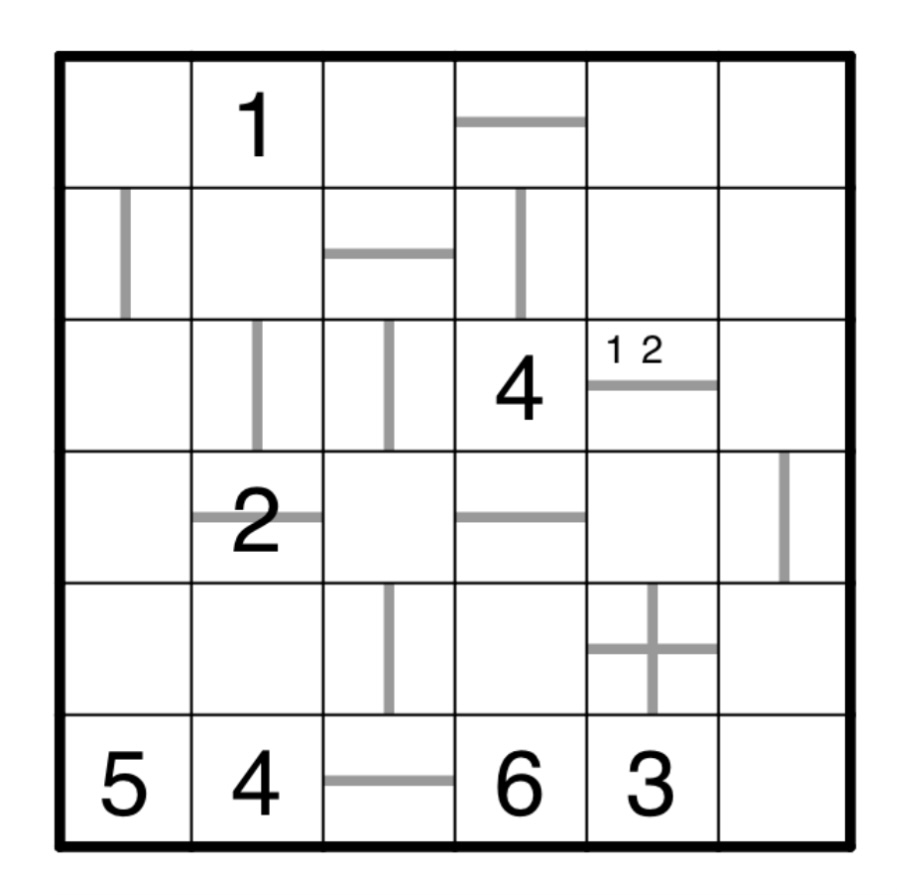A very neat puzzle! I felt like I needed to deduce and use a range of lemmas and corollaires to solve it.
Before we dive in, a couple of lemmas/corollaries:
Lemma 1: Consider the pattern:

We must have A > D
Corollaries: A cannot be 1 and D cannot be 6
Lemma 2: Consider the pattern:

We must have A+B = D+E
Armed with Lemma 1 we get:
Applying our corollary to column 3 forces
The 2 in R6C3 with some more cells coming as a result of lemma 1
Now
To ensure the horizontal bar is in the correct place in column 2, the 3 must be placed in R5C2
This forces
Row 3 into this unique arrangement with respect to the vertical bar
This is where we bring in lemma 2
R2C3 must be one more than R5C3. The only consecutive pair of numbers that fit are 4 and 5
Let’s go back to lemma 1 to get
Now
The 6 in row 5 can only go in one place to ensure the horizontal bar is in the correct place. This gives a lot more cells via the usual Latin square logic.
Finally, using lemma 2
In row 4 forces the final unique solution (which I slipped up on in my original submission - thanks Dante)








